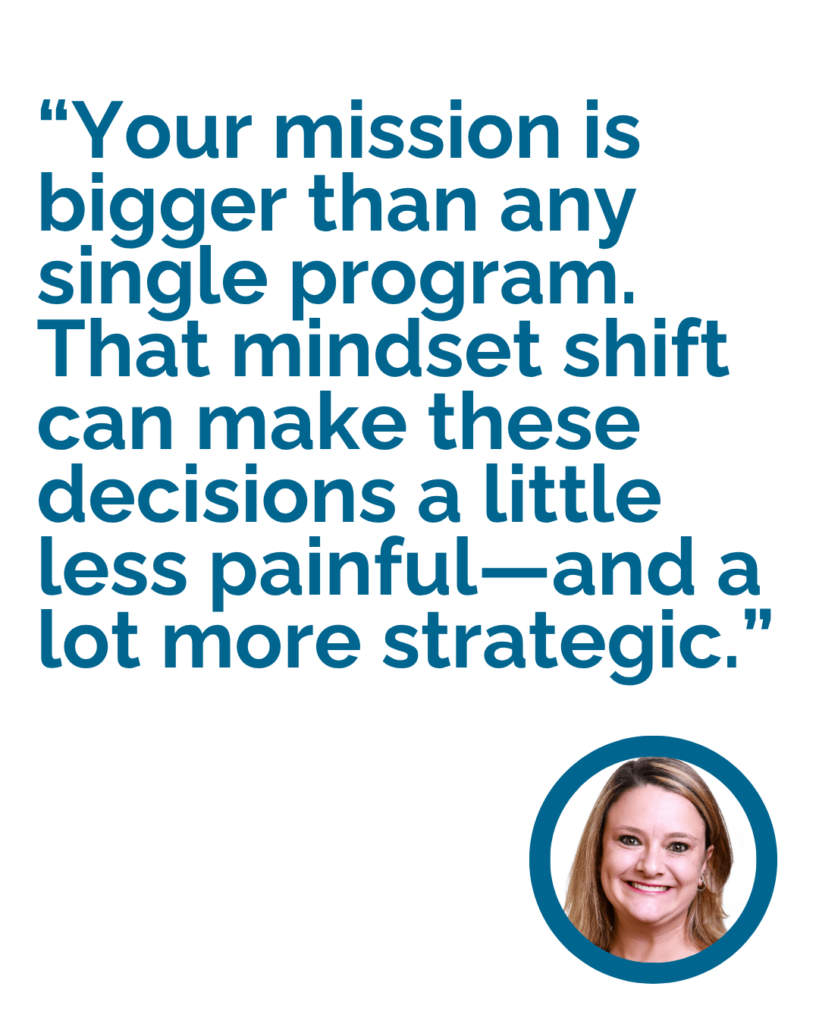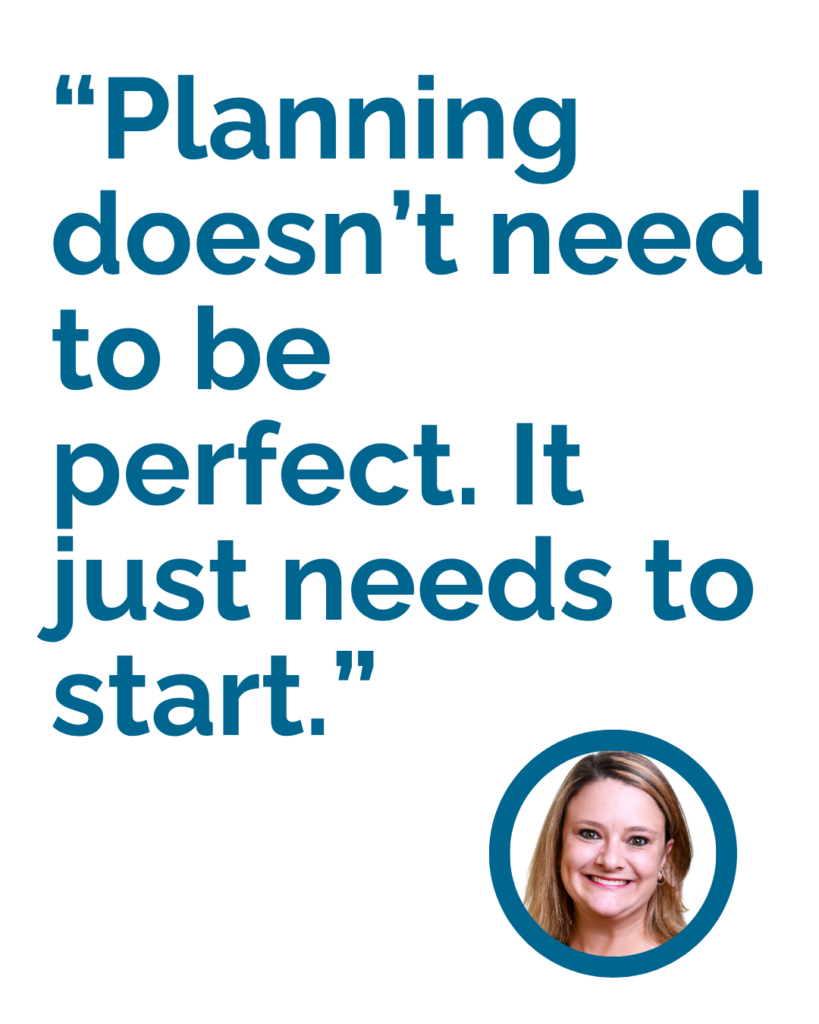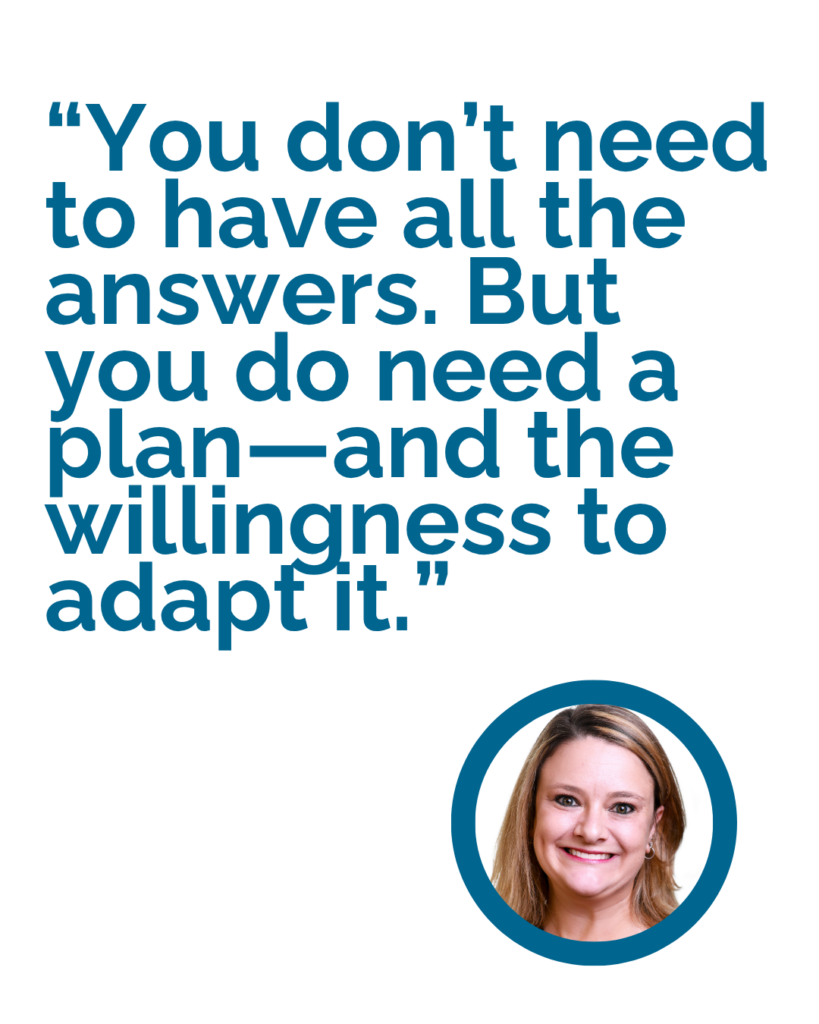In the nonprofit sector, uncertainty is nothing new. But the current funding landscape—with declining federal support and growing pressure on private philanthropy—has pushed many organizations to the edge of their comfort zone.
That’s why Elevate’s second session in our 2025 Conversation Series struck a chord. Titled Doing Less with Less, the virtual event on March 6, 2025 brought together leaders from across the country to face today’s biggest challenges head-on. We were joined by Elevate’s Founder and CEO, Alayna Buckner, as well as the Co-Founder and CEO of 20 Degrees, Sara Gibson. Alayna and Sara provided thoughtful and practical advice for nonprofit leaders at this moment of uncertainty.
Here are the five questions nonprofit professionals are asking most—and the practical steps you can take right now.
1. What should I be doing right now?
Let’s face it: being a nonprofit leader today means holding uncertainty in one hand and responsibility in the other.
Here’s what to focus on:
- Do an exposure assessment: Evaluate your programs and funding sources. Which initiatives or budget line items are most at risk if grants or federal dollars are cut?
- Plan for multiple futures: Think worst-case, best-case, and everything in between. Give each scenario a name (yes, really—it helps make the process easier to manage).
- Strengthen your relationships: Talk to your board, funders, elected officials, and peer orgs. Communicate early, clearly, and often.
These early steps align with the mindset we explored in this previous blog post on adapting to uncertainty, which offers additional ways to stay grounded and proactive before making major decisions.
2. How do I make decisions when the future is uncertain?
No one has a crystal ball. But that doesn’t mean you can’t plan.
Smart moves to make now:
- Clarify your criteria: Get grounded in your mission, values, community needs, and financial picture.
- Differentiate major vs. routine decisions: Don’t freeze. Some choices—like whether to backfill a role—can buy you time while you wait for more clarity on the larger, strategic decisions you’ll need to make.
- Explore your option set: Cutting costs, shifting resources, pausing programs, or pursuing mergers are all on the table.
Bonus tip: Download 20 Degrees’ Resilience Roadmap for a hands-on framework to help guide your planning process.
3. What should I do if there’s just not enough funding?
It’s a hard truth: sometimes the numbers just don’t work.
What to do when you’re facing shortfalls:
- Get clear on your tipping point: Know the exact conditions that would lead you to pause or end a program.
- Create a closure checklist: Have a plan for winding down responsibly, including how you’ll communicate with stakeholders, other organizations where you can refer clients, and the methods in which you’ll document learnings.
- Plan for a comeback: If funding comes back down the line, you’ll want to be ready to relaunch.
 Remember: your mission is bigger than any single program. That mindset shift can make these decisions a little less painful—and a lot more strategic.
Remember: your mission is bigger than any single program. That mindset shift can make these decisions a little less painful—and a lot more strategic.
4. How do I make time for planning when I’m already swamped?
You’re juggling more than ever, and now you’re supposed to plan on top of that?
Try this:
- Honor your energy: Schedule planning time when you’re most focused—even if it’s just 20 minutes a week.
- Share the load: Involve your senior team and your finance folks. This doesn’t have to be a solo project.
- Make a “stop doing” list: What can you pause for the next 4–6 weeks to free up space for the work that matters most?
 Planning doesn’t need to be perfect. It just needs to start.
Planning doesn’t need to be perfect. It just needs to start.
5. How do I get my Board more engaged right now?
When funding shifts, your board’s role becomes even more critical—but also more complex.
Tips for stronger board engagement:
- Communicate early and clearly: Avoid surprises. Consider holding a special meeting with a single-issue agenda.
- Balance realism with possibility: Share challenges, but also offer a path forward. Help them stay hopeful and informed.
- Clarify expectations: Your board probably won’t fill budget gaps—but they can help advocate, fundraise, and spread the word.
And remember: business-minded board members may need extra guidance to understand the social sector’s priorities and constraints.
Final Thoughts
 You don’t need to have all the answers. But you do need a plan—and the willingness to adapt it.
You don’t need to have all the answers. But you do need a plan—and the willingness to adapt it.
Whether you’re evaluating programs, weighing funding scenarios, or just trying to protect your team’s energy, one thing is clear: the work you’re doing matters. And you don’t have to do it alone.
Additional Resources
12 Urgent Financial Action Steps – Nonprofit Financial Commons
Strategy Triage Tool – Center for Community Investment
Checklist for Winding Down a Program – Nonprofit Risk Management Center
4 Things Nonprofits Can Do Now, to Better Adapt to Uncertainty – Elevate Blog
Resilience Roadmap – 20 Degrees
Explore other resources and insights from the Navigating Uncertainty series:
About the Author:

Associate Vice President of Continuous Improvement











 Planning doesn’t need to be perfect. It just needs to start.
Planning doesn’t need to be perfect. It just needs to start. You don’t need to have all the answers. But you
You don’t need to have all the answers. But you 




